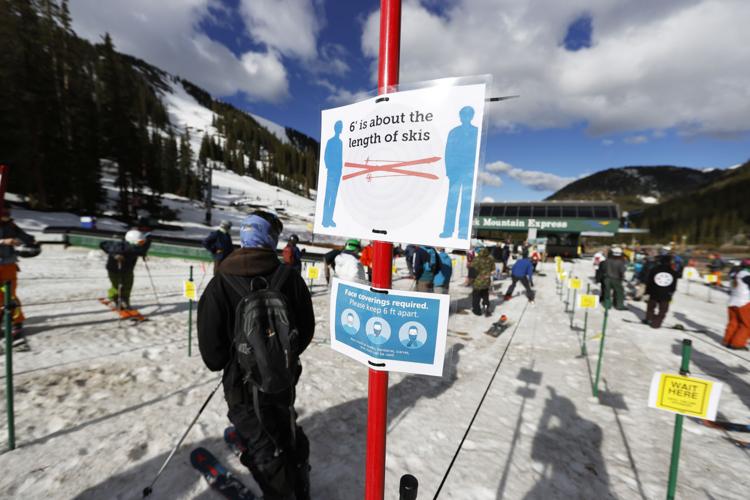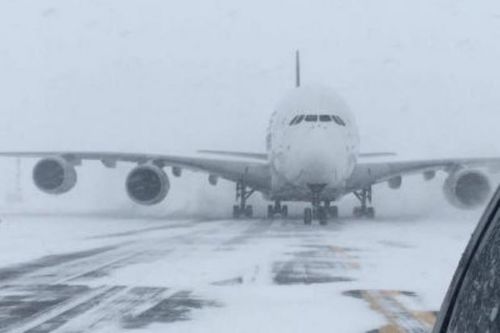Hard to believe, but here it is: The middle of March, and ski season is starting to wind down.
The fact that we had a ski season this year is pretty remarkable. For a while it was touch and go. There were questions about whether or not resorts would be able to open and if we’d get to ski at all. Thankfully, with a few exceptions — Hunter Mountain, for example, closed for a day — ski areas in the US have managed to remain open. Sure, the season’s been different and yes, even a bit challenging. We’ve had to wear masks, boot up at our cars, stay out of lodges, and remain 6-feet apart. We could only ride the lifts with the people we came with. Apres was pretty much off the table. And going in to pee seemed like a death-defying act.
Still, these are First World problems, and not a very high price to pay for getting out there to ski. The resorts were open and the lifts were spinning. For that, I am truly grateful.
Which brings us to where we are now. Unlike last year, when skiing ground to a screeching halt because of a dire health emergency, closing this year looks much like it did before the pandemic. Ski resorts are starting to release their dates, and as you’d expect in a normal year, they’re all over the place. In 2018-2019 — the last pre-COVID season — five ski areas in the western US were open for skiing on July 4: Timberline, Arapahoe Basin, Mammoth, Snowbird, and Squaw Valley/Alpine Meadows. So for some places, the length of the season is still up in the air.
So how do resorts decide when to close?
It pays to be flexible. According to Bonnie MacPhearson, Vail’s Northeast Communications Manager, closing dates for its resorts are based on many factors, including historical data such as weather, snowfall, base depths, skier visits, and business levels overall. The company has already issued some revisions. Thanks to an abundance of snow, Keystone, Beaver Creek, Vail, Heavenly, Kirkwood, and Northstar will now close later than originally planned, and may stay open even longer, if conditions permit. In the east, Vail extended closing for Mount Sunapee, Mount Snow, and Wildcat, while keeping Okemo at its original date of April 4 so it can begin working on some major capital improvements..
I also asked Killington, which is a Powdr Resort; Sugarbush, owned by Alterra; Magic, an independent; and Arapahoe Basin, owned by Dundee Resort Development, how they arrived at their closing dates. Here’s what they had to say:
Killington & Pico
Courtney DeFiore, Communications/PR & Social Media Manager: Powdr’s business model is all about autonomy, which allows each resort to highlight their strengths and truly shine. So when it comes to closing each season, that decision is made internally at the resort. Pico’s closing date is Sunday, April 4. However, at Killington Resort, we don’t announce a closing date because we’re always trying to extend the season as long as weather and conditions permit. Often, we ski and ride through May, overlapping with mountain bike operations and golf. The snowmaking team is still hard at work at The Beast making snow as we stockpile for spring skiing. So, while we don’t have a set date to close, you can bet it will be some time after neighboring mountains stop their lifts for the season.
Sugarbush
John Bleh, Public Relations & Communications Manager: We choose our own close date, not Alterra. We basically aim to stay open as long as we can, which is typically always the first weekend in May. We run daily until the weekend before, close midweek that final week, and open back up for one final weekend. It really is just snowpack that dictates it for us, and so first weekend in May is what we always aim for, typically down to just Stein’s Run, Coffee Run, and MAYBE Snowball/Spring Fling depending on the year.
Some other notes though. We close Mt. Ellen at end of March, mainly due to demand. There just aren’t enough skier visits in April to justify running two mountains. We also have to stop running the Slide Brook Quad by April 15th because of a deal we have with the national forest, though Mt. Ellen closes before that anyway.
Arapahoe Basin

The decision to close can be based on weather and conditions. Above, A-Basin in June, 2018……..
Katherine Fuller, Communications Manager: A-Basin has the longest ski/ride season in Colorado and is typically open into June. Last season we were able to reopen for two weeks between May 27 and June 7 after the state-mandated COVID closure in March. The season before that [2019], we were open until July 4, and tacked on a couple of extra weekends for the winter terrain park. We have been open on July 4 seven times in our history.

….and A-Basin in June, 2019.
We don’t announce a closing date in advance because we want to be open for skiing and riding as long as possible. As long as the snow is good and we can provide a quality ski and ride experience, then we will stay open. Closing day is almost entirely weather- and conditions-dependent. Lucky for us, our high elevation (10,780’ at the base to 12,456’ at the top of the highest lifts) works in our favor.
Sometimes in late spring, we will switch to Friday-Sunday operations to allow the snowcat drivers to spend weekdays consolidating snow on the most-used runs, managing water runoff, and doing other maintenance and grooming work.
Magic Mountain (VT)
Geoff Hathaway, President: We typically set a closing date of the first weekend in April. We can adjust if we want, but by then in a typical season, traffic dies way off as families get entrenched in spring school sports and weather down south turns warmer. It doesn’t make business sense for us to stay open much later into April unless we get a big surprise snow storm. So we have the same date this year but if attendance remains strong, we can always adjust.



